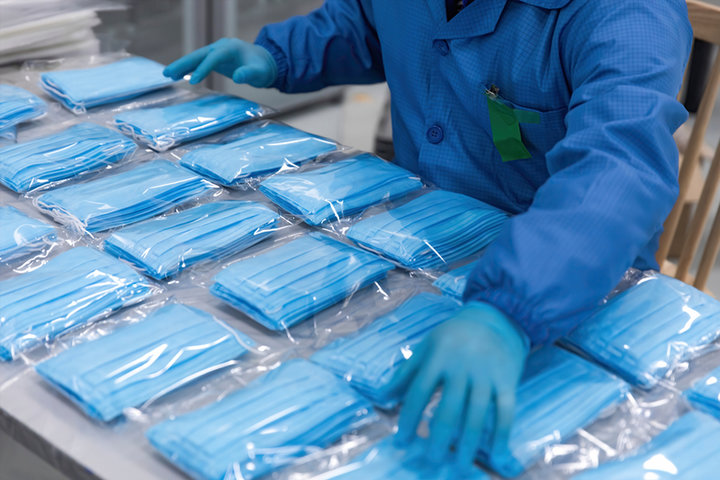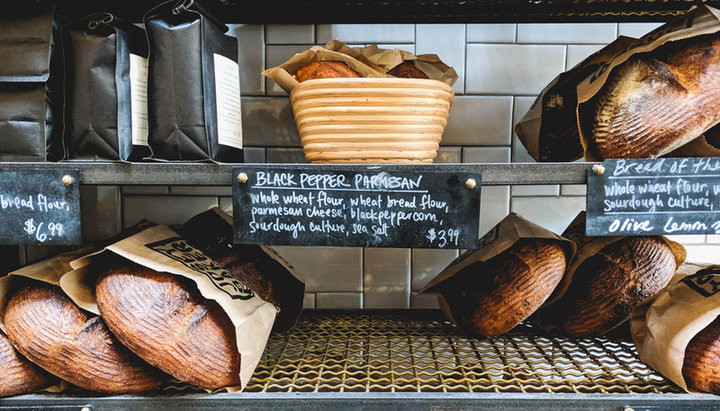Paper | Sustainability
Paper | Sustainability
Is paper the material for a sustainable future?
With increasing consumer awareness of the environmental impact of plastic packaging, the demand for sustainable packaging materials has also grown. Jessie Paige investigates whether paper has the potential to contribute to a sustainable future.
Cover image: Shutterstock
Plastichas become a controversial material in recent years, with the UK charity for circular economy the Ellen Macarthur Foundation even predicting that there could be more plastic in the ocean than fish by 2050.
Many governments around the globe have started a so-called ‘war on plastic’, such as in Europe, where EU member states are aiming to ban single-use plastic by 2021.
Another material that has come into mainstream attention is paper and, with this, the debate over whether paper is actually a good alternative to plastic.
But is paper the sustainable future, or is it just as bad, if not worse, than plastic?
More paper, less plastic
South African pulp and paper company Sappi argues that there needs to be more paper and less plastic and that the call for eco-friendly food packaging made from renewable sources is becoming more and more relevant.
“The standards that food packaging must meet today are extremely diverse and demanding,” the company says. “The use of plastics and non-recyclable composite materials should be minimised.”
Sappi also thinks that modern packaging offers more protection than necessary to individual products. The company says that a complete replacement of plastic with paper material is a complex process, but one that has already begun.
Also of the opinion that paper is a good sustainable alternative to plastic is European beauty company Biovène Barcelona, who strongly believes that nature combined with science is the answer to creating the best products.
“The rising consumer demand for more eco-friendly products is fueling the research and development of new packaging options,” says Erik Lambert, CEO of Biovène Barcelona.
“Until there are cost-effective packaging options that can replace what’s mainly being used today, the industry may benefit by offering consumers alternatives.”
Plastic still has a purpose
Some companies, however, feel that paper is not as sustainable as many think. Paul Morris, CEO of global additive specialist Addmaster believes that paper is not a good alternative for plastic.
“Paper is a great product, but when people want to move from plastic to paper, thinking it’s more environmentally friendly when it’s not, then I get very frustrated,” Morris says. “There are a few examples of where paper could be a good substitute but plastic is more waterproof, easier air seal and longer lasting - so why swap?
“The problem is people recycling or reusing the plastic, not the actual use. The biggest problem is designers making products out of paper and plastic and then neither is recyclable. People forget that paper is normally a single-use item and why people think a paper bag is a better alternative to a carrier bag I will never know.”
Giving another example of where paper is not a suitable plastic alternative, Morris highlights appropriate materials in context of the current Covid-19 pandemic.
“If you want to think about where plastic has a home and where paper does, think, is a personal protective equipment (PPE) kit made from paper? No, and that sums up that they are two different substrates and not always interchangeable just because of a naive environmental debate,” He says.
Morris adds that the work Addmaster has been doing with UK retailer Marks on Spencer on protecting it’s ‘Bags 4 Life’ using its anti-bacterial ‘Biomaster’ technology shows the impact that we can have on creating a hygienic reusable item.

Morris is not alone in these views. UK-based waste management expert BusinessWaste.co.uk is another company keen to be rid of single-use paper packaging.
“We campaigned to get rid of the plastic bags and then people at Morrisons started using paper products,” says Mark Hall, the founding director of BusinessWaste.co.uk. “To produce the paper product though you use a tonne of water and it’s a single-use product.
“It generally gets flung in the paper waste bin with people thinking it would just decompose, so it’s not even being recycled. In terms of cost, it may be cheaper, but other than that, the energy to make them is quite high.”
Hall thinks that instead of paper of plastic, more emphasis should be made on the opportunities that natural materials offer.
“The best solution is to use something plant-based, something like Vegware, like something made from wheat. It’s sturdy stuff. That’s the only true sustainable material, it’s natural, it grows out of the ground. It can even go to an incinerator,” Hall adds.
“Another alternative is bamboo. Bamboo is microwavable, it’s natural, it grows out of the ground. Everyone thinks paper is better, but the energy to make it is off the charts so it outweighs any benefits that could come to it.”
Everyone thinks paper is better, but the energy to make it is off the charts
Paper leads to food waste
Not only do some companies think that paper is not actually sustainable, but others also comment on the amount of food waste produced as a result of the material.
Richard Hobson, CEO of UK-based resealable tape firm We Seal, says that bread is the second most wasted food item in the UK, with 900,000 tonnes going to waste annually and that paper packaging is partly to blame.
“Whilst consumers instinctively feel like paper bags would be more environmentally friendly, in reality, that’s simply not the case,” Hobson says.

“There are a number of reasons why paper has a larger impact on the planet than the recyclable plastic currently used in bread bags, but one key driver is that paper is porous, which means the bread goes stale faster than with plastic, ultimately leading to more waste.”
And reiterating the flaws of paper packaging, Hobson points out the common misunderstanding amongst consumers, assuming that all paper packaging is recyclable. "In some instances, where paper packaging is used for bread, the wrapper is lined with a plastic or alternative synthetic material anyway, in order to prevent moisture loss on the product.”
“Some paper wrappers also have a window, in order for the consumer to be able to see the bread inside. Both of these alternatives sadly defeat the object, rendering the bag non-recyclable and the packaging ending up in landfill. It's important to look at the bigger picture and the impact on other environmental issues, especially food waste.”
While paper does have many benefits when it comes to sustainability, there are also many factors that make it worse than plastic. As with anything, the context and application is key to deciding what material is best. Needless to say, with the war on plastic becoming such a big focus across the globe, the debate on paper as ‘the sustainable future’ will continue.
Cover image: Shutterstock